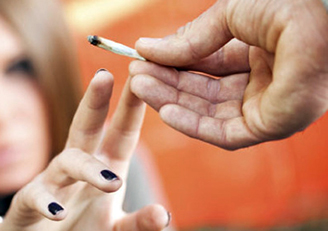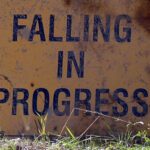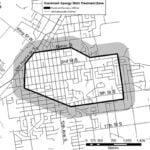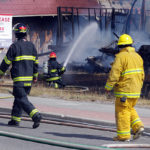Home »

Report raises concerns about youth mental health
East Kootenay results of the McCreary Centre Society’s 2013 BC Adolescent Health Survey (BC AHS) are now available.
 Results for the East Kootenay area, which included students in Southeast Kootenay (SD5), Rocky Mountain (SD6), and Kootenay Lake (SD8) showed that the majority of Grade 7–12 students reported good physical and mental health; felt connected to their family, school, and community; had positive plans for the future; and were engaging in health promoting behaviours which will assist them to transition successfully to adulthood.
Results for the East Kootenay area, which included students in Southeast Kootenay (SD5), Rocky Mountain (SD6), and Kootenay Lake (SD8) showed that the majority of Grade 7–12 students reported good physical and mental health; felt connected to their family, school, and community; had positive plans for the future; and were engaging in health promoting behaviours which will assist them to transition successfully to adulthood.
Although regional students were more likely than their peers across the province to have tried tobacco, alcohol or marijuana, there were local decreases in the percentages who had done so. Also in comparison to 2008, more youth who had tried alcohol were delaying their first drink until they were at least 15 years old.
Students were less likely to be seriously injured than five years previously, and were more likely to be engaging in injury prevention behaviours such as wearing a seatbelt, and not mixing alcohol and driving.
It was not all good news though. Mental health results were concerning as 27% of East Kootenay girls and 19% of boys reported a mental health condition (such as Depression, ADHD or Anxiety Disorder). Girls were also more likely than boys to have deliberately harmed themselves in the past year, and to have seriously thought about and attempted suicide.
 “We have seen great local improvements in areas such as substance use that show young people are making some good choices about their health, but the results also show us that a lot of students are not getting enough sleep, and are struggling with mental health issues. We also see a direct relationship between these two, as the more hours of sleep students got the more likely they were to report positive mental health,” said Annie Smith, Executive Director of McCreary Centre Society. “I think the results also show the importance to students of supportive and caring relationships, and it was great to see higher than usual percentages of youth who had an adult in their community who cared about them.”
“We have seen great local improvements in areas such as substance use that show young people are making some good choices about their health, but the results also show us that a lot of students are not getting enough sleep, and are struggling with mental health issues. We also see a direct relationship between these two, as the more hours of sleep students got the more likely they were to report positive mental health,” said Annie Smith, Executive Director of McCreary Centre Society. “I think the results also show the importance to students of supportive and caring relationships, and it was great to see higher than usual percentages of youth who had an adult in their community who cared about them.”
Between February and June 2013, almost 30,000 students in Grades 7–12 completed the BC Adolescent Health Survey (BC AHS) in schools across British Columbia. This is the fifth time students have been asked to complete the survey. It was conducted previously in 1992, 1998, 2003 and 2008. All school districts in this region participated in the survey in 2013, 2008 and 2003, which allowed for the inclusion of trends over the past decade.
The survey results are used by federal and provincial policy makers and program planners, as well as by local decision makers and others with an interest in youth health.
The survey is designed to consider emerging youth health issues and to track trends over time. It included 130 questions asking youth about their perceptions of their current physical and emotional health, as well as risky behaviours and health promoting practices. Healthy development for youth includes many contributing factors, and the survey also asked about broader issues such as feelings of safety, relationships, and engagement in a variety of activities.
Key findings in the East Kootenay
 – The percentage of students in East Kootenay born outside Canada doubled (from four per cent in 2008 to eight per cent in 2013) but remained below the provincial rate of 19%. Students were more likely than their peers across the province to identify as European (71% vs. 53%) and Aboriginal (15% vs. 10%).
– The percentage of students in East Kootenay born outside Canada doubled (from four per cent in 2008 to eight per cent in 2013) but remained below the provincial rate of 19%. Students were more likely than their peers across the province to identify as European (71% vs. 53%) and Aboriginal (15% vs. 10%).
– Comparable to the provincial rates, 92% of youth never went to bed hungry, while six per cent went to bed hungry sometimes, and two per cent went to bed hungry often or always. The percentage of youth who never went to bed hungry, increased locally from 87% in 2008.
– In the past year, 11% of East Kootenay students (five per cent of males vs. 16% of females) reported not accessing needed mental health services, and nine per cent of students (six per cent of males vs. 12% of females) did not get medical help when they thought they needed it.
– Males generally reported better mental health than females, including higher rates of self- confidence and sense of competence, and lower rates of suicide ideation (11% vs. 19%) and suicide attempts (five per cent vs. 10%) in the past year.
– In the past year, a third of students were injured seriously enough to require medical attention. This percentage was higher than the rate across B.C. for both males (37% vs. 30% provincially) and females (29% vs. 24% provincially). However, this was a local decrease, from 43% in 2003 and 38% in 2008.
– More than one in five students experienced a concussion in the past year (26% of males vs. 17% of females). Mirroring what was seen provincially; 16% of youth who had a concussion had not accessed needed medical help.
– Rates of ever having sex were higher than those across B.C.; however, there was a decrease in the percentage of youth who ever had sex (other than oral sex), from 33% in 2003 to 29% in 2013. Also, most local youth who ever had sex (64%) reported using a condom or other latex barrier the last time, which was similar to the percentage throughout the province.
 – Youth in East Kootenay were more likely than their peers across the province to have ever tried tobacco, alcohol, or marijuana. However, there were local improvements over time, including reductions in the use of all three substances across survey years. Also, youth who drank alcohol were waiting longer to have their first drink than five years previous, with 74% having their first drink before age 15 compared to 84% in 2008.
– Youth in East Kootenay were more likely than their peers across the province to have ever tried tobacco, alcohol, or marijuana. However, there were local improvements over time, including reductions in the use of all three substances across survey years. Also, youth who drank alcohol were waiting longer to have their first drink than five years previous, with 74% having their first drink before age 15 compared to 84% in 2008.
– Eight percent of youth who had tried alcohol had ever driven a car after drinking alcohol, which reflected a local decline from 14% in 2008. It was more common for local youth to have driven after using marijuana, which 20% of marijuana users had ever done (no different from the 2008 rate), and 11% had done in the past month.
– Rates of physical abuse, physical and verbal sexual harassment decreased from previous survey years for both males and females. Rates of sexual abuse decreased for males but not for females. As was the case provincially, female students were more likely than males to have experienced physical abuse, sexual abuse, physical sexual harassment and verbal sexual harassment in the past year.
– Fifty-six percent of students (61% of males vs. 51% of females) slept for eight or more hours the night before taking the survey, and six per cent slept four hours or less. Most youth (78%) were online and/or on their phone after his/her expected bedtime.
– Females were more likely than males to be a healthy weight for their age and gender (79% vs. 70%), while males were more likely than females to be obese (nine per cent vs. four per cent). Sixteen per cent of healthy weight females thought they were overweight, compared to five per cent of healthy weight males. Also, nearly half (49%) of healthy weight females were trying to lose weight, and 29% of healthy weight males were trying to gain weight.
 – Protective factors which appeared to improve outcomes for even the most vulnerable youth included physical activity, meaningful engagement in activities, nutrition, and getting eight or more hours of sleep. Local results also highlighted the importance of supportive relationships with peers and adults, including family, teachers and other professionals.
– Protective factors which appeared to improve outcomes for even the most vulnerable youth included physical activity, meaningful engagement in activities, nutrition, and getting eight or more hours of sleep. Local results also highlighted the importance of supportive relationships with peers and adults, including family, teachers and other professionals.
– Sixty-nine per cent of students (65% of males vs. 72% of females) reported having an adult in their neighbourhood or community (beyond their school or family) who cared about them. This percentage was higher than the provincial rate (61%). Feeling cared about by an adult outside the family was associated with positive mental health, including higher rates of self-confidence and perceived competence, and lower rates of suicide attempts.
In addition to local findings, the provincial report: From Hastings Street to Haida Gwaii: Provincial results of the 2013 BC Adolescent Health Survey and other resources are available at www.mcs.bc.ca.
A copy of the report Easy Kootenay: Results of the 2013 BC Adolescent Health Survey can be obtained here.
A series of webinars to share the findings have also been scheduled for Thursday January 29 at 11 a.m., Monday, February 2 at 3:30 p.m., and Friday February 6 at 8:30 a.m. Log-in details are available at www.mcs.bc.ca.
Submitted







